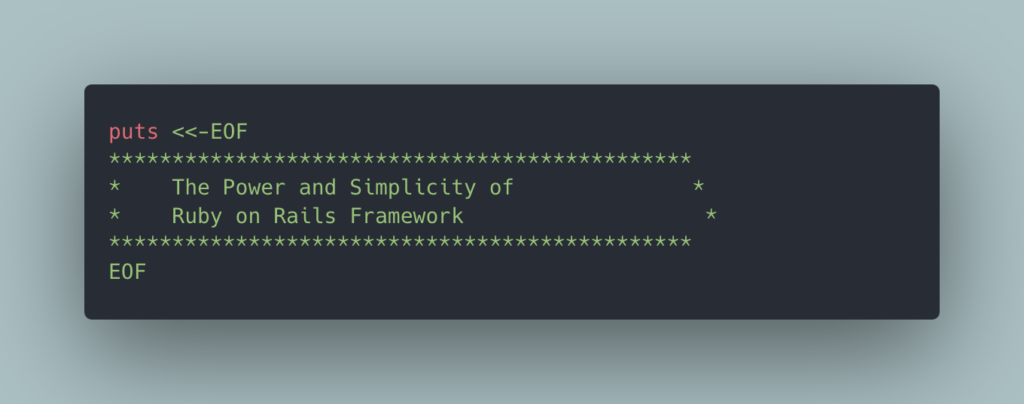
In the world of web development, there are numerous frameworks to choose from, each with its own set of advantages and features. One such framework that has gained immense popularity is Ruby on Rails (RoR). In this blog post, we will explore why Ruby on Rails is a preferred choice for many developers and businesses alike.
- Convention over Configuration⚙️: One of the fundamental principles of Ruby on Rails is “Convention Over Configuration.”. This means that the framework follows a set of conventions and assumptions about how things should be done, reducing the need for manual configuration. This approach allows developers to focus more on building the application logic rather than dealing with repetitive and mundane tasks.
- Rapid Application Development 🧑💻: Ruby on Rails is known for its ability to facilitate rapid application development. The framework provides a vast array of pre-built libraries, tools, and generators that help developers write clean and maintainable code quickly. These conventions and tools, combined with the simplicity of the Ruby language, enable developers to build web applications with remarkable speed and efficiency.
- MVC Architecture: Ruby on Rails follows the Model-View-Controller (MVC) architectural pattern. This separation of concerns allows for a clean codebase and promotes modular development. With clear boundaries between the data models, application logic, and user interface, it becomes easier to understand, test, and maintain the code.
- Active Record: Ruby on Rails includes a powerful Object-Relational Mapping (ORM) tool called Active Record. It provides a simple and intuitive way to interact with the database, allowing developers to work with database records as objects. This abstraction eliminates the need to write complex SQL queries and simplifies database operations.
- Routing: Routing is an essential aspect of web applications, and Ruby on Rails makes it incredibly straightforward. The framework follows a convention-based approach to define routes, making it easy to map URLs to specific controllers and actions. This convention-based routing system enhances the readability and maintainability of the application’s routing configuration.
- Testing Framework: Ruby on Rails has a built-in testing framework, making it easier to write and execute tests for your application. The framework encourages developers to follow a test-driven development (TDD) approach by providing a robust testing environment. Automated testing not only improves the quality of the code but also makes it easier to catch and fix issues early on.
- Active Community and Rich Ecosystem: Ruby on Rails has a vibrant and active community of developers who contribute to its growth and improvement. This active community ensures that the framework is continuously updated, secure, and equipped with the latest features. Additionally, Ruby on Rails benefits from a rich ecosystem of gems (libraries) that can be easily integrated into your application, saving time and effort.
Overall, the power and simplicity of Ruby on Rails lie in its strong conventions, elegant design patterns, rich ecosystem, and emphasis on developer productivity. By leveraging these strengths, developers can build robust, scalable, and maintainable web applications with ease. if you’re looking for a framework that prioritizes developer productivity, code maintainability, and rapid prototyping, Ruby on Rails should be at the top of your list! 😊
Discover the possibilities with our comprehensive web development services. Explore our website for a seamless digital experience diffiter.com
